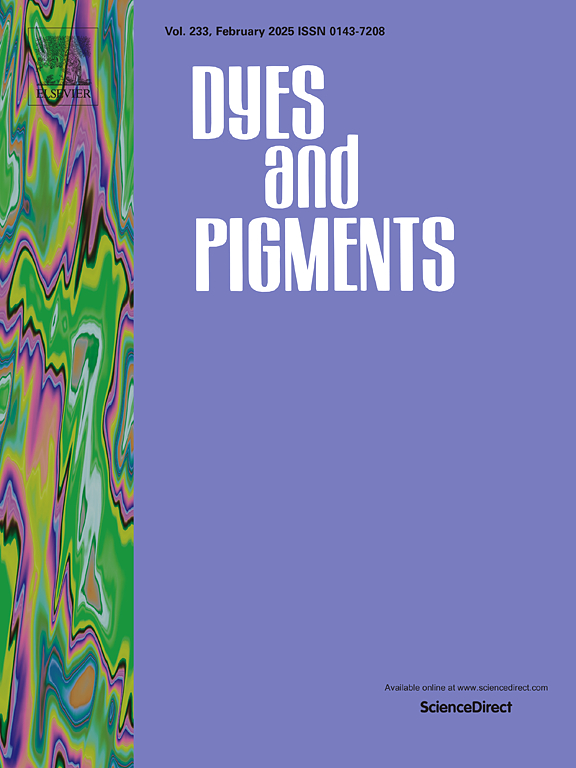Fluorogenic heptazines functionalized with tetrazine rings for conjugation through inverse Electron Demand Diels-Alder reaction
IF 4.1
3区 工程技术
Q2 CHEMISTRY, APPLIED
引用次数: 0
Abstract
Fluorogenic probes that can selectively target molecules or materials thanks to click chemistry are promising tools for labelling or functionalization. Heptazines are heterocycles that gather appealing electrochemical and photophysical properties, combining high photooxidation potentials with long fluorescence lifetimes. However, selective grafting of molecular heptazines on a substrate is still underdeveloped. In this work, we report the synthesis, photophysical and electrochemical properties of two heptazine derivatives conjugated with one and three tetrazine rings respectively. These heptazines conjugated to tetrazines are very weakly fluorescent. We demonstrate that they can react in a fast manner with a strained alkyne, through an Inverse Electron Demand Diels-Alder reaction. This reaction has been followed thanks to a home-built photokinetics setup: in a timecale of a few seconds blue emitting heptazine pyridazine conjugates are generated with an 8.6 to 13.6 fluorescence turn-on.

求助全文
约1分钟内获得全文
求助全文
来源期刊

Dyes and Pigments
工程技术-材料科学:纺织
CiteScore
8.20
自引率
13.30%
发文量
933
审稿时长
33 days
期刊介绍:
Dyes and Pigments covers the scientific and technical aspects of the chemistry and physics of dyes, pigments and their intermediates. Emphasis is placed on the properties of the colouring matters themselves rather than on their applications or the system in which they may be applied.
Thus the journal accepts research and review papers on the synthesis of dyes, pigments and intermediates, their physical or chemical properties, e.g. spectroscopic, surface, solution or solid state characteristics, the physical aspects of their preparation, e.g. precipitation, nucleation and growth, crystal formation, liquid crystalline characteristics, their photochemical, ecological or biological properties and the relationship between colour and chemical constitution. However, papers are considered which deal with the more fundamental aspects of colourant application and of the interactions of colourants with substrates or media.
The journal will interest a wide variety of workers in a range of disciplines whose work involves dyes, pigments and their intermediates, and provides a platform for investigators with common interests but diverse fields of activity such as cosmetics, reprographics, dye and pigment synthesis, medical research, polymers, etc.
 求助内容:
求助内容: 应助结果提醒方式:
应助结果提醒方式:


